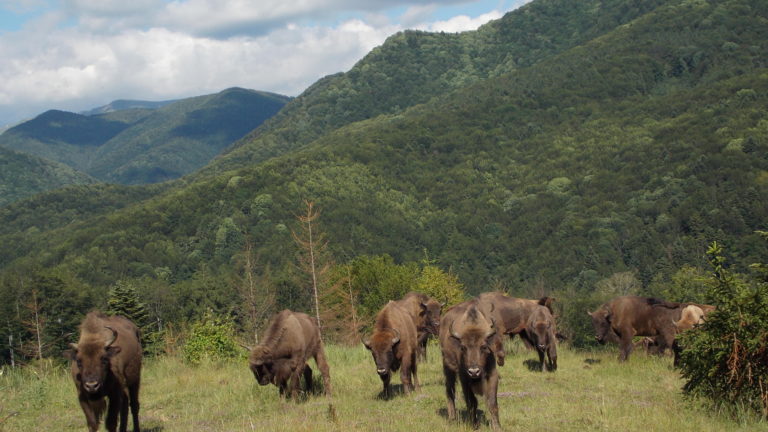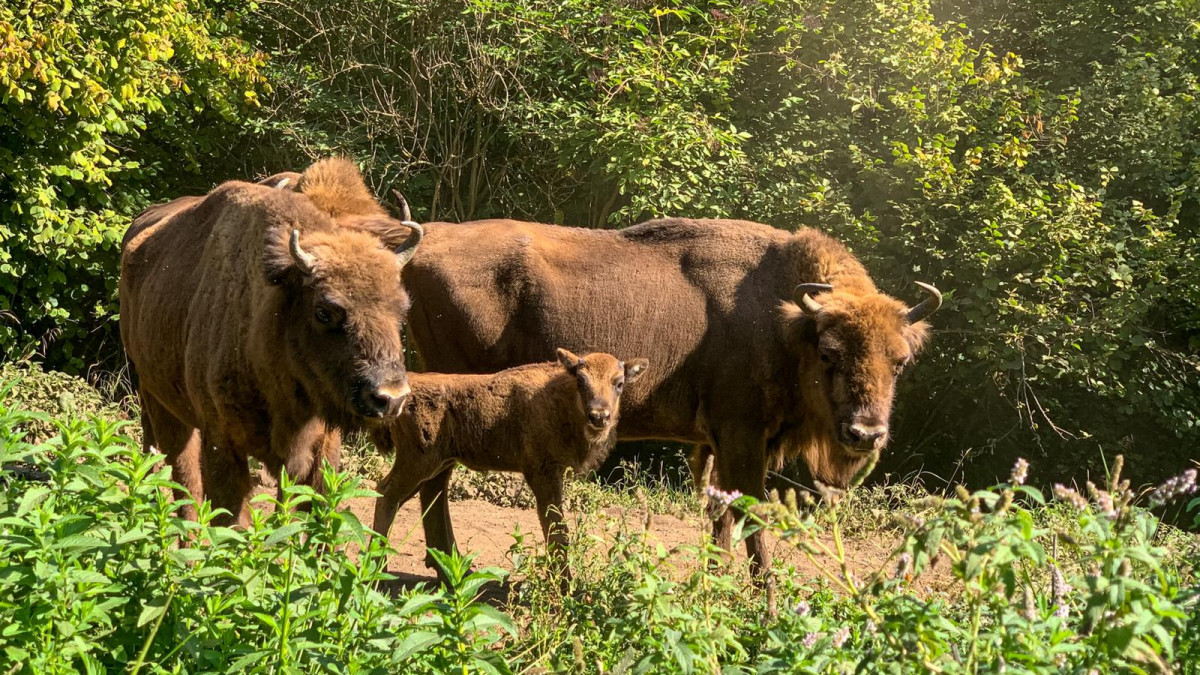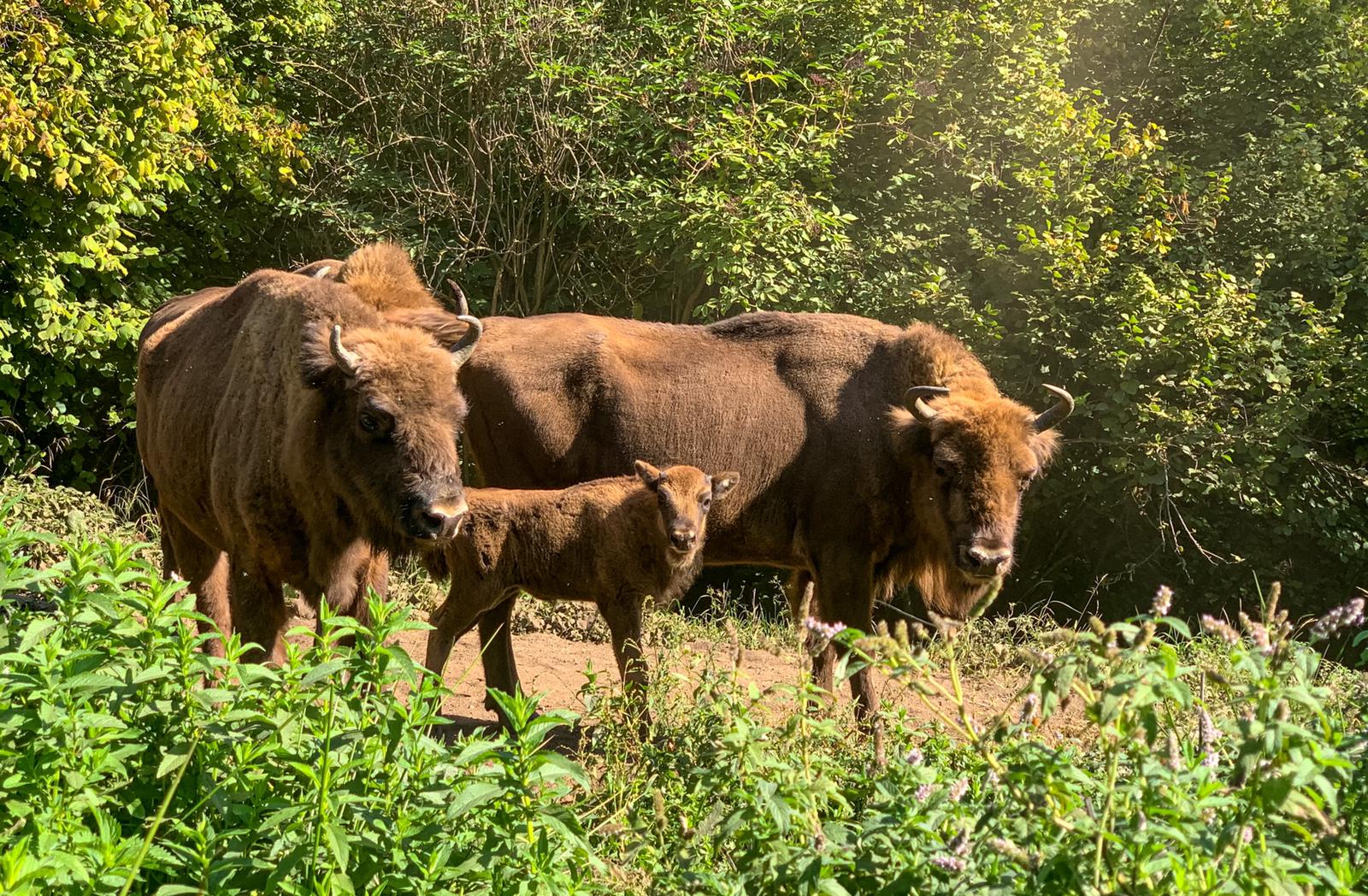
- Inspiring People -
- 4mins -
- 500 views
European bison back from the brink but still in need of protection
Thanks to long-term conservation efforts the European bison population has increased sufficiently for it to be removed from IUCN’s list of vulnerable species and reclassified as “almost threatened.”
European bison recovering say International Union for the Conservation of Nature
European bison, Europe’s largest land mammal, are no longer considered a vulnerable species due to the conservation work that takes place in Europe, Romania being among the few countries with bison roaming wild. The result of the long-term conservation of the European bison species (Bison bonasus) is the increase in population from some 1,800 individuals in 2003 to over 6,200 in 2019, justifying the transition from vulnerable to almost threatened in the Red List of Threatened Species, according to the International Union for the Conservation of Nature (IUCN).

The bison is an umbrella species that safeguards the quality of life of other species
A recent article by Life-Bison reported that the European bison (Bison bonasus) was at one point even rarer than the black rhino and survived only in captivity in the early twentieth century. The reintroduction of the bison into the wild began in the 1950s, and in Romania in 2012.
The largest subpopulations are now found in Poland, Belarus and Russia, but only eight of them are large enough to be genetically viable in the long run. The species remains dependent on ongoing conservation measures, such as the relocation of bison to optimal habitats to create viable populations and the promotion of human-bison coexistence.
In Romania there are now more than 100 individuals in three different areas: Vânători Neamț Natural Park, Făgărș Mountains and Țarcu Mountains. The largest population, of over 65 bison, is in the Tarcu Mountains and is a result of an initiative by Rewilding Europe and WWF Romania.
Bison have been transported from reserves and breeding centers in Europe following a complex selection process to ensure genetic diversity. The aim of the project is to create a viable population that breeds in the wild and develops both biodiversity and sustainable entrepreneurship ideas based on ecotourism for local communities to thrive.
Source: Life-Bison.com

the species is still threatened by various challenges
The LIFE Bison project team carefully monitors the behavior of bison to ensure their well-being and coexistence with locals living and working near to the rewilding area.
The bison is an umbrella species that safeguards the quality of life of other species in the food chain and maintains the natural balance on which we all depend. It has become a local symbol that has allowed locals to rediscover the richness of nature around them, wonderful landscapes that fascinate tourists in search of adventure experiences in the wild or tranquility in the villages.
“The bison calves born in the wild and the support of local communities are good signs that bison belong to these ancestral lands, but let’s not forget that the species is still threatened by various challenges, from habitat loss to ambiguity in legislative processes. That is why we believe that only working together we can ensure the progress made in the last 70 years will not decline, but that we will witness a change for the better.” says Marina Drugă, the manager of the LIFE Bison project.
Source: Life-Bison.com

Bison recovery demonstrates the power of conservation in action
Dr Bruno Oberle, Director General of the IUCN, said that bison and twenty-five other species had been recovered according to the IUCN Red List update, which demonstrates the power of conservation in action.
“Yet the growing list of Extinct species is a stark reminder that conservation efforts must urgently expand. To tackle global threats such as unsustainable fisheries, land clearing for agriculture, and invasive species, conservation needs to happen around the world and be incorporated into all sectors of the economy.” he also stated.
The reintroduction of bison in the Southern Carpathians is carried out within the project ”Urgent actions for the recovery of European Bison populations in Romania”, implemented by WWF Romania and Rewilding Europe, with financial support from the European Union, through the LIFE Program and with the help of local communities.
- Find out more about the LIFE Bison project
- Watch the animation which explains human-bison coexistence
- Visit the Bison Hillock rewilding area with European Safari Company or WeWilder
- Follow the action in the field on the Facebook project page

